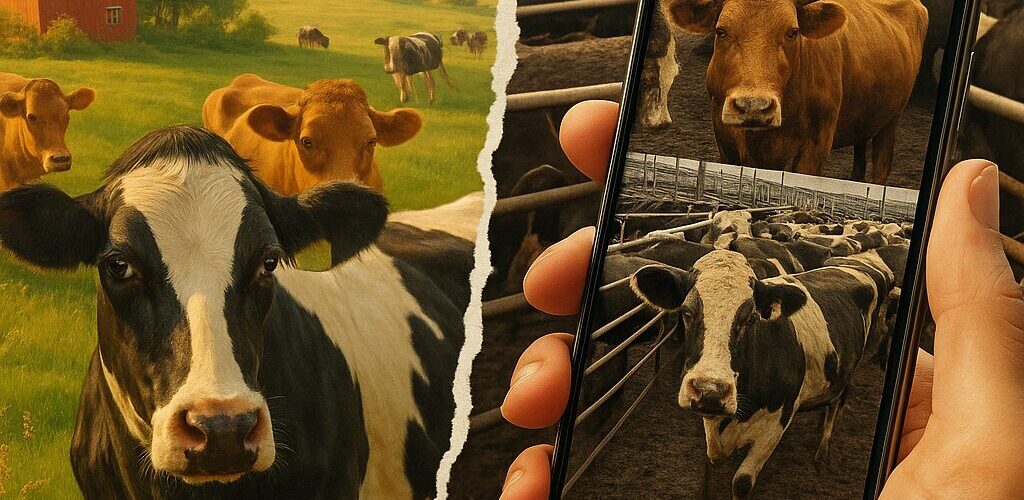The battle for controlling food narratives has entered a new era. Once dominated by traditional agriculture organizations like dairy, meat, and grain lobbies, the conversation around what we eat is now being reshaped by TikTok creators, YouTubers, and Instagram influencers. These new voices bring trendier, more critical, and often more authentic stories to millions of young consumers. With social media taking over as the primary shaper of food culture and consumer choices, traditional agriculture faces unprecedented challenges. Governments, meanwhile, walk a tightrope: investing millions into campaigns promoting traditional farming while simultaneously encouraging more sustainable eating. Against this backdrop, a fascinating cultural, political, and economic clash is unfolding — one that will define how future generations view food.
Trend Snapshot / Factbox
| Aspect | Details |
|---|---|
| Trend name and brief definition | TikTok vs. Traditional Agriculture: Battle for Food Narratives |
| Main ingredients or key components | Social media storytelling, influencer marketing, traditional advertising, food ethics |
| Current distribution (where can you find this trend now?) | Primarily TikTok, Instagram, YouTube; also visible in traditional ad campaigns |
| Well-known restaurants or products currently embodying this trend | Oatly, Beyond Meat, local farm-to-table restaurants, and mainstream beef/dairy campaigns |
| Relevant hashtags and social media presence | #FarmTok, #Cottagecore, #FoodTransparency, #RealMilk, #FoodExposés |
| Target demographics (who mainly consumes this trend?) | Gen Z, Millennials, ethically conscious consumers |
| “Wow factor” or special feature of the trend | Real-time exposure of agricultural practices vs. curated brand storytelling |
| Trend phase (emerging, peak, declining) | Peak |
From “Got Milk?” to #FarmTok: A Shift in Power
For decades, food marketing was the domain of powerful industry groups. Campaigns like “Got Milk?” or “Beef. It’s What’s for Dinner” shaped national diets and beliefs about health. Today, a single TikTok post exposing poor animal welfare or promoting oat milk over dairy can reach millions overnight. This democratization of influence disrupts the historical monopoly of agricultural lobbies, allowing alternative food movements like veganism, urban gardening, and regenerative farming to flourish. Consumers no longer need glossy TV commercials to learn about food—they get raw, often emotional, narratives straight from the farms or kitchens of creators they trust.
Social Media Creators vs. Big Agriculture Campaigns
Social media platforms are witnessing a groundswell of pro-plant-based, local, and ethical eating movements. Creators amplify messages about the environmental impact of meat, the benefits of heirloom grains, or the reality of factory farming. Meanwhile, agriculture lobbies counter-attack with hashtags like #RealMilk and strategic influencer partnerships. According to a Washington Post article from February 12, 2025, U.S. beef and dairy lobbies are now investing heavily in TikTok collaborations to win back Gen Z’s favor. Yet, their efforts often clash with the authenticity valued by social media audiences, making traditional marketing tactics feel out of touch.
“The battle for food culture is no longer fought on supermarket shelves but on smartphone screens.”
The Rise (and Risk) of Farmer Romanticism
While niche trends like #Cottagecore romanticize rural living and farming, major food brands and supermarkets have embraced a sanitized “back-to-the-land” imagery. Commercials show happy cows grazing in endless meadows or sun-drenched farmers picking tomatoes by hand. This advertising strategy deepens the disconnect between consumers and the often harsh realities of industrial agriculture. It masks issues like overuse of pesticides, labor exploitation, and environmental degradation. Instead of promoting transparency, these campaigns can reinforce myths that slow necessary systemic changes. Critics argue that this “greenwashing” creates a false sense of ethical consumption, making consumers believe they are supporting wholesome practices when the reality might be different.
Food Politics: Between Subsidies and Social Movements
Governments add another layer of complexity. The EU, for example, pours millions into promoting beef consumption while also funding campaigns to cut meat for climate reasons. In the U.S., agricultural subsidies still heavily favor large-scale livestock and monoculture crops, even as official dietary guidelines recommend more plant-based foods. Meanwhile, social media movements create pressure from below, demanding reforms in transparency, animal welfare, and sustainability. TikTok’s 2024 “Food Misinformation” initiative, designed to combat false narratives, underscores how volatile this space has become. Traditional industries find themselves battling not just competitors, but the very platforms that shape public discourse.
Viral Trends and Their Real-World Impact
What happens on TikTok doesn’t stay on TikTok. Viral trends like oat milk, regenerative farming, or “ugly produce” movements have translated into real market shifts. Supermarket shelves adjust, new startups emerge, and even giants like Nestlé pivot their product lines in response. According to market data, trends sparked by food influencers now directly influence pricing models, supply chains, and investment strategies. #FarmTok, with over 5 billion views, has become a central stage where traditional and alternative food narratives collide. The food industry is no longer just adapting to consumer demand; it is trying to co-opt the very influencers who redefine that demand daily.

